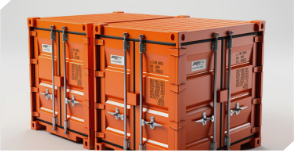Blockchain in Logistics: Driving Transparency in 2025
The logistics industry in 2025 is embracing blockchain technology to revolutionize supply chain transparency and security. By creating tamper-proof records for every transaction and shipment, blockchain is streamlining operations and building trust across global trade networks.
How Blockchain Works in Logistics
Blockchain operates as a decentralized digital ledger, storing data in secure, unchangeable blocks. In logistics, it tracks a shipment’s journey from origin to destination, providing all stakeholders with real-time, shared access to accurate information. This reduces disputes, minimizes paperwork, and accelerates processes.
Key Benefits for Supply Chains
Enhanced Transparency: Blockchain offers a single, reliable source of truth, enabling instant verification of a shipment’s origin, condition, and status.
Fraud Prevention: Immutable records prevent data falsification, safeguarding against counterfeit goods and ensuring regulatory compliance.
Streamlined Operations: Smart contracts—automated agreements encoded on the blockchain—handle tasks like payments and customs clearances, cutting delays and costs.
Recent implementations have shown significant results, with some logistics providers reporting up to a 30% reduction in documentation errors through blockchain adoption.
Real-World Impact
Industry pioneers like Maersk and IBM are leveraging blockchain platforms such as TradeLens to optimize global trade. These solutions are setting a new standard for efficiency, inspiring broader adoption across the sector.
Looking Forward
As blockchain gains traction, its potential for sustainability tracking is emerging. Future applications could allow supply chains to verify eco-friendly practices, aligning with growing demands for greener logistics. Blockchain isn’t just a trend—it’s a foundation for the future of logistics.

